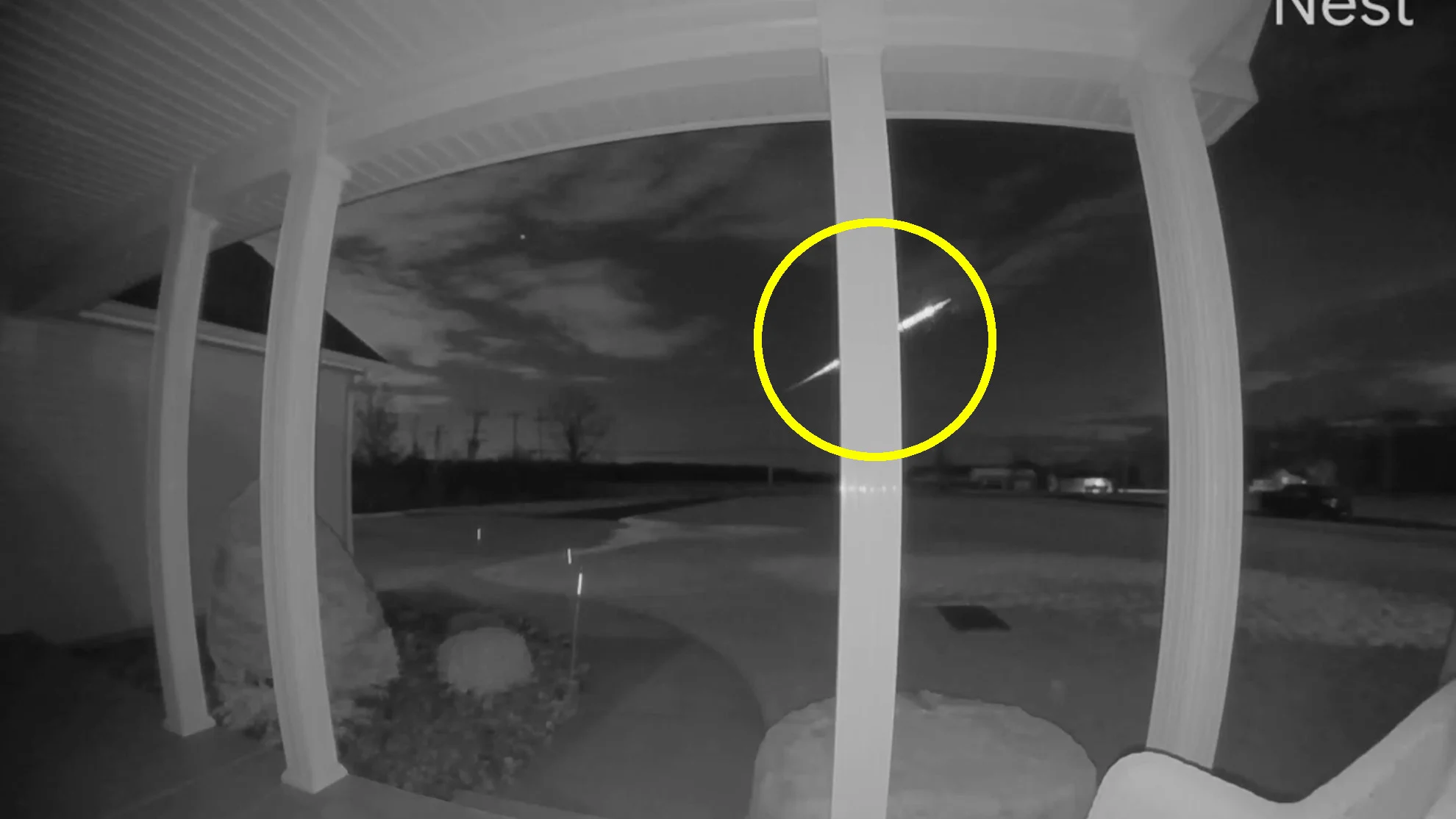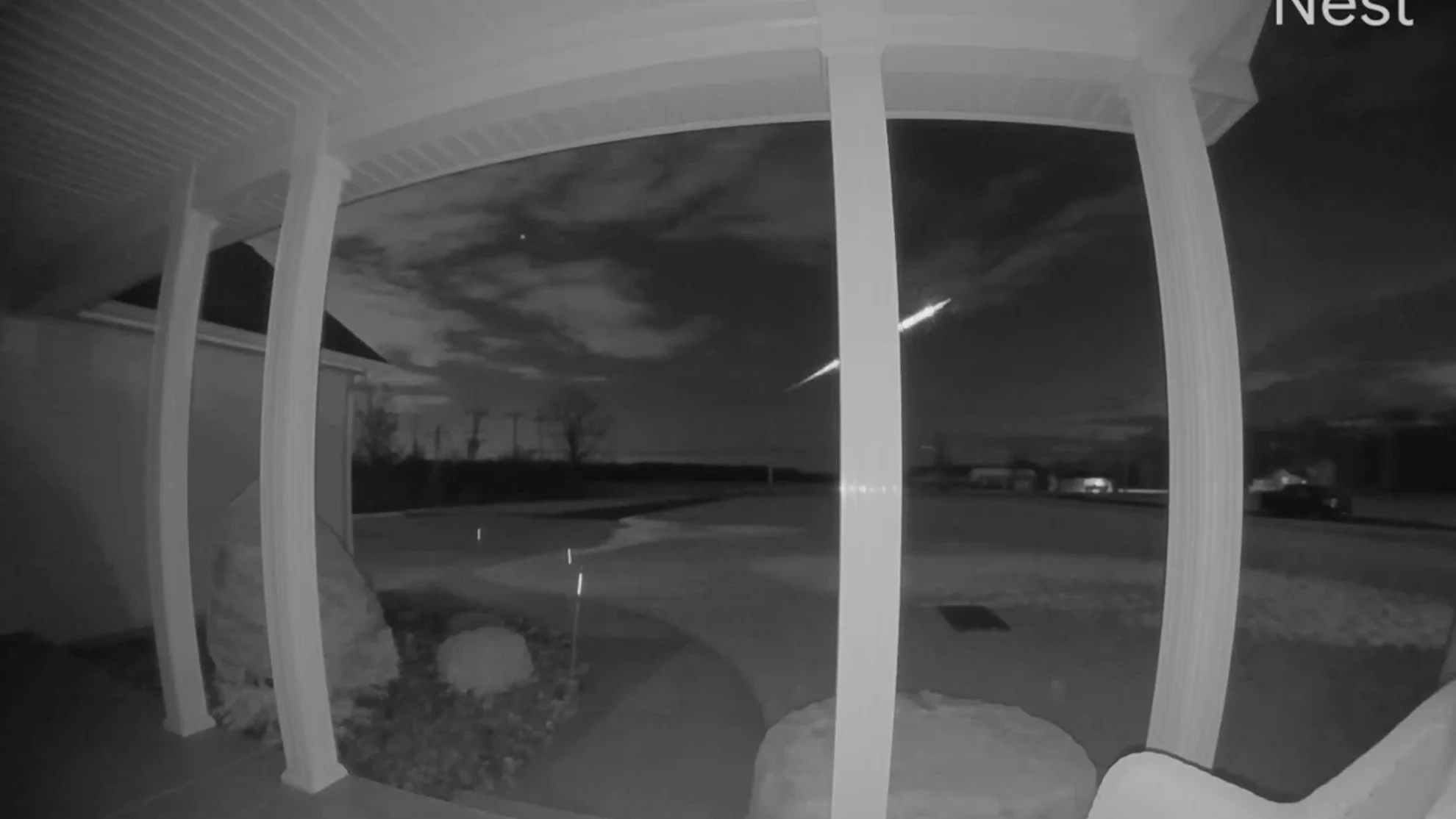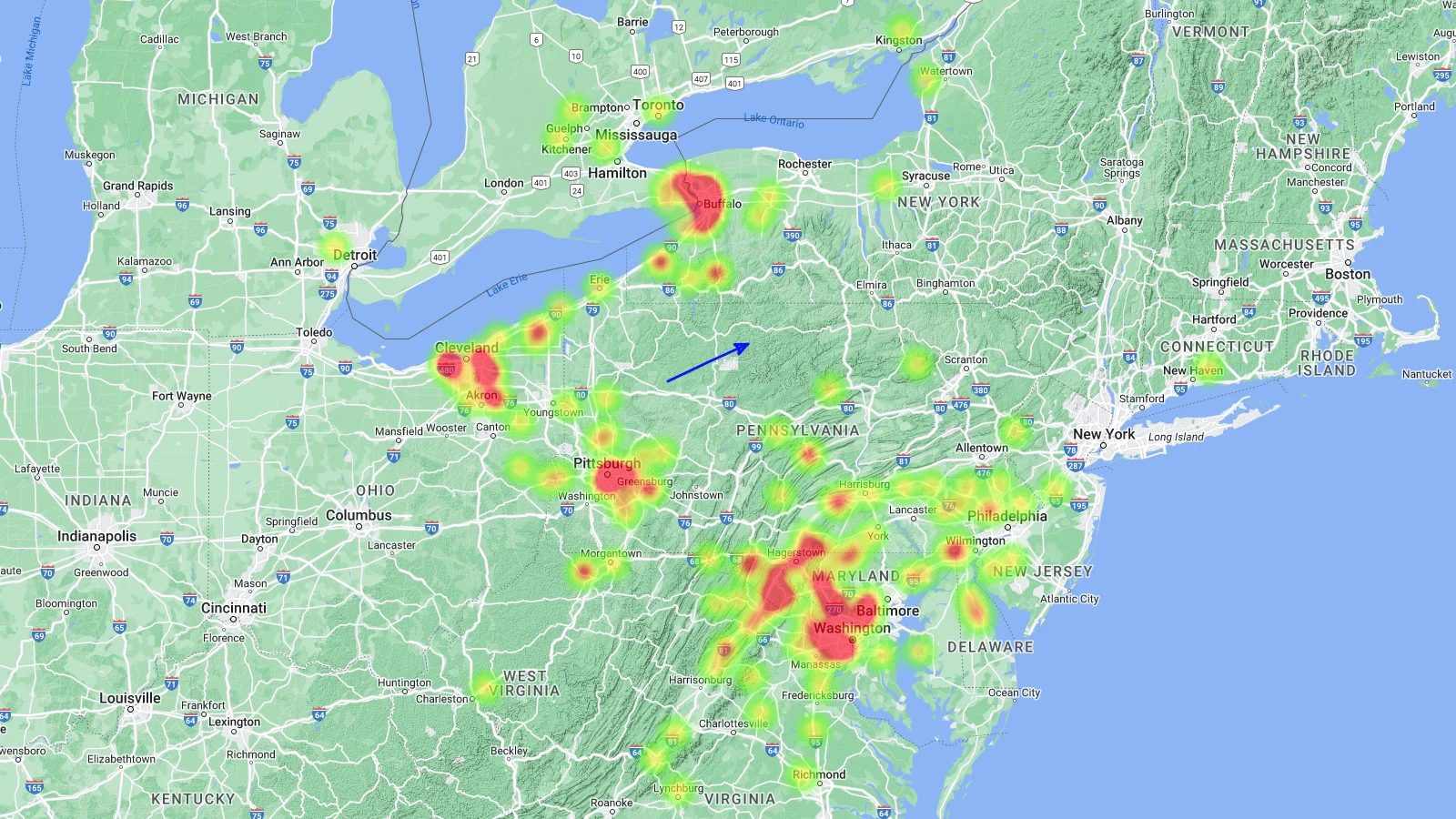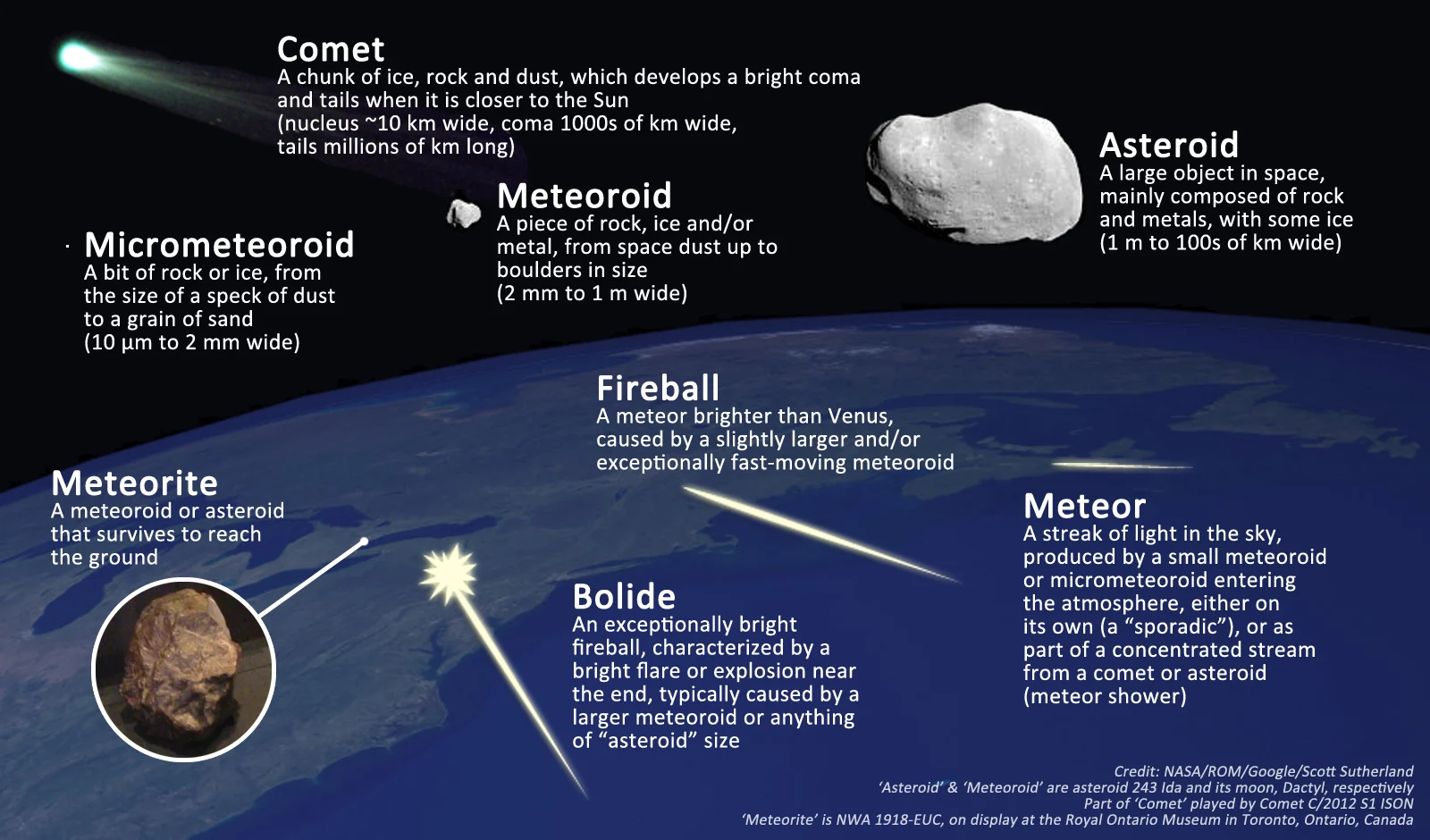
Bright fireball spotted blazing across the sky Wednesday night
This fireball was likely witnessed by thousands of people from across southern Ontario and throughout the eastern United States.
Did you see the bright meteor that flashed across the southern sky Wednesday evening?
It seems that we had a small visitor from space Wednesday night! At around 6:48 p.m. EST on February 21, witnesses from Windsor to Kingston and as far south as Virginia were lucky enough to catch a small meteoroid plunging into Earth's atmosphere.

Nearly 70 frames from a video shot by a doorbell camera in Grand Island, NY, near Niagara Falls, have been combined here to show the full track of the February 21, 2024 fireball meteor as it traced a path across the sky. The meteor travelled from right to left across the field of view. Credit: Stephen Mathes c/o the American Meteor Society
According to over 220 reports to the American Meteor Society, this fireball flashed through the sky above western Pennsylvania.
Due to the reasonably clear skies at the time, reports were logged from across the lower Great Lakes area, from Detroit to the Greater Toronto Area and as far east as Kingston. However, it was also reported from far and wide throughout the eastern United States, with the greatest number of witness reports coming in from Buffalo, Cleveland, Pittsburgh, and the Washington, D.C. area.

This 'heat map' of Wednesday night's fireball event shows the most likely path of the meteor (blue arrow). The splotches of colour on the map denote the concentrations of witness reports for the event. Credit: American Meteor Society
The trajectory shown above is not necessarily the exact path of the meteor. It is an automated 'guess' by the AMS reporting system, based on the collective information provided to them by the witness reports.
Also, the number of reports on the AMS site — 225 as of midday Thursday — represents only a small fraction of the actual number of people who saw this amazing event.
According to Lee Sterry of Niagara 411, they had logged over 700 comments from people in the Niagara Region alone who had witnessed this fireball.
If you spotted this meteor yourself, you can add your report here.
READ MORE: Got your hands on a space rock? Here's how to know for sure
What was this??
This meteor flash was caused by a small rock, known as a meteoroid, intercepting Earth and entering the planet's atmosphere from space.
According to NASA, the meteoroid originated from the asteroid belt between Mars and Jupiter, and was travelling roughly 50,000 kilometres per hour when it hit the atmosphere. Although the meteor trajectory appears fairly even across the sky in photos and videos, their data suggest that it actually started around 60 km above the ground and ended about 36 km up.

This infographic presents examples of the various objects and terminology around meteors, meteoroids and meteorites. Credits: Scott Sutherland/NASA/Royal Ontario Museum/Google Earth
When meteoroids — bits of rock and ice floating around in space — get swept up by Earth, they plunge into the upper atmosphere travelling at speeds of anywhere from 11 to 72 kilometres per second.
At those speeds, a meteoroid compresses the air in its path, causing that air to heat up until it glows. That is the flash of light we call a meteor.
Sometimes, depending on the minerals contained in the meteoroid and what part of the atmosphere it flashes through, the meteor flash it produces can display colours such as green, yellow, red, blue or even purple.
Typical meteors wink out in a fraction of a second. This is either because the meteoroid was vaporized or slowed down due to its interaction with the atmosphere.
Fireballs result from slightly bigger meteoroids, perhaps the size of a pebble up to a baseball or basketball. These shine so intensely as they blaze through the atmosphere that they rival the brightest objects in the sky and can be seen from hundreds of kilometres away.
Occasionally, a slightly larger meteoroid will plunge into the atmosphere, lighting up the sky as if it were daytime and exploding in an even brighter flash towards the end. While these are grouped into the category of fireballs, they also go by the name bolide.
Thumbnail image courtesy Stephen Mathes and the American Meteor Society











